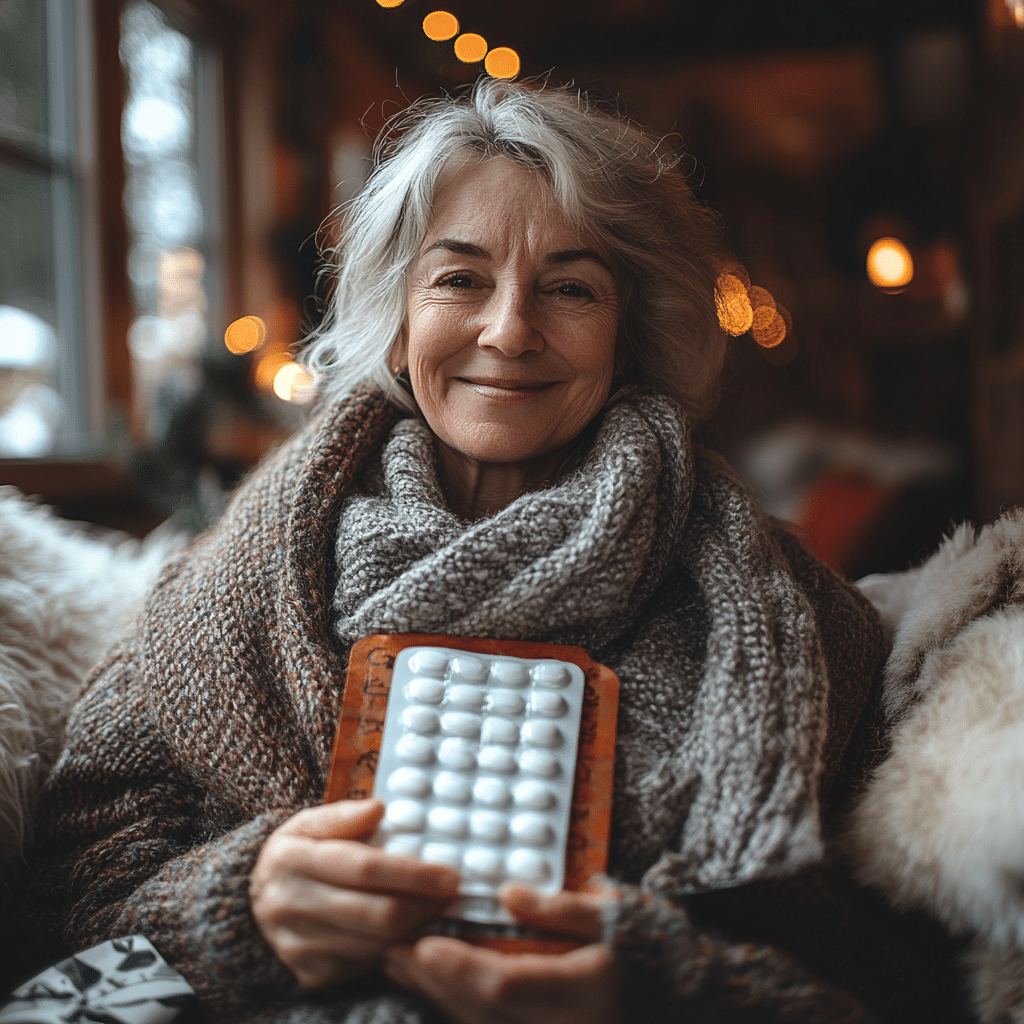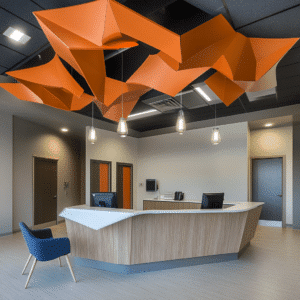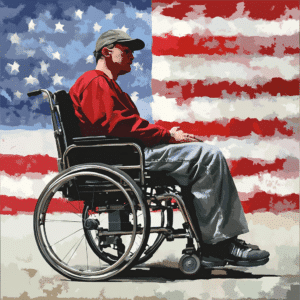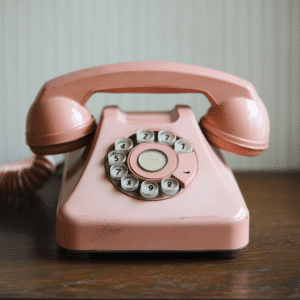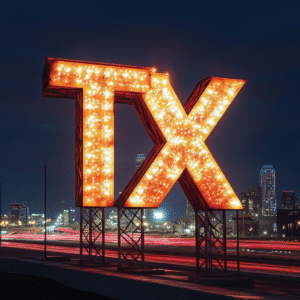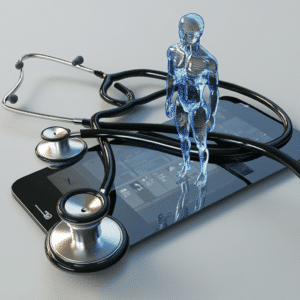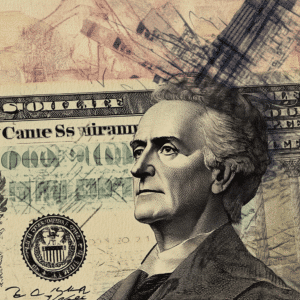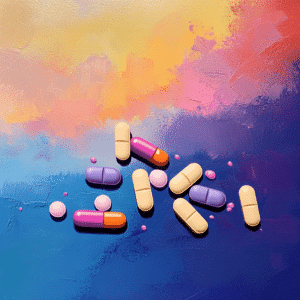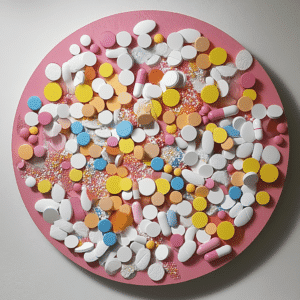As a parent, there’s nothing more devastating than facing the struggles that addiction brings into your home. Many families today grapple with the heartbreaking reality of a loved one battling opioid addiction. Here, we explore the life-saving power of Naloxone—a medication that reverses opioid overdoses— and shed light on Naloxone accessibility. Understanding how it works could just save a life, offering a glimmer of hope for those navigating the murky waters of addiction. As we dive in, let’s remember that no one is alone in this fight.
Understanding Naloxone and Its Role in Overdose Prevention
What is Naloxone?
Naloxone, often known by its brand name Narcan, is an opioid antagonist. When administered, it binds to opioid receptors in the brain, reversing the life-threatening effects of opioids. By blocking the effects of opioids, Naloxone can restore normal breathing in someone who has overdosed. This isn’t just a theoretical benefit—when given promptly, it can truly mean the difference between life and death.
Opioid Overdose Statistics
The stark reality of the opioid crisis is reflected in alarming statistics. According to the CDC, over 70,000 people died from opioid overdoses in 2022 alone. These figures underscore the urgent need for prompt intervention with Naloxone. Research indicates that timely administration of Naloxone can reverse an overdose in less than three minutes. That’s why promoting Naloxone accessibility is crucial; every moment counts when someone’s life hangs in the balance.
Real-life Impact Stories
Consider the story of Katina Taylor, who lost her son to an overdose, followed by the heartbreaking realization that another life could have been saved. Her experience, shared in a local article, emphasizes how access to Naloxone could have changed outcomes for numerous families like hers. Stories like Katina’s show us that Naloxone isn’t just a drug; it’s a lifeline wrapped in hope, waiting to be utilized.
The Current State of Naloxone Accessibility in 2024
Overview of Legislation
In 2024, many states have enacted “standing orders,” allowing consumers to obtain Naloxone directly from pharmacies without a prescription. This vital legislation has made it easier than ever for people to access this life-saving tool. It empowers individuals to take proactive steps when faced with a loved one at risk of overdose.
Dispensing Locations
Major pharmacy chains like CVS and Walgreens now offer Naloxone over-the-counter, highlighting the commitment to public health initiatives. This move is helping normalize the conversation surrounding Naloxone, making it a common household item rather than a stigma-laden concern. Parents now can have this medication on hand, providing an essential safety net.
Community Distribution Programs
Non-profit organizations such as Project Recovery spearhead initiatives to distribute Naloxone within communities, often offering it for free. These community programs stress that everyone, especially those directly affected by addiction, should have access to Naloxone. By increasing Naloxone accessibility, we fill the gaps in traditional healthcare, reaching those who need help most.
| **Aspect** | **Details** |
|---|---|
| What is Naloxone? | A medication used to reverse opioid overdoses by rapidly restoring normal respiration. |
| Formulation | Available as a nasal spray (Narcan) and injectable solution. |
| Accessibility | Many states allow naloxone to be obtained without a prescription through standing orders at pharmacies. |
| Who Can Access? | Anyone who may need naloxone for themselves or someone else at risk of overdose can access it. |
| Administration Method | For the nasal spray: aim away from the middle of the nose toward the ear, and spray half of the capsule into each nostril. |
| Monitoring Post-Administration | Individuals should be observed continuously until emergency medical care arrives, and monitored for 2 hours after the last dose. |
| Potential Risks | – Induction of acute withdrawal syndrome in opioid-dependent patients. – Possible premature wearing off of naloxone effect. |
| Safety Precautions | Do not expose naloxone to eyes or skin. If contact occurs, rinse immediately. The medication must be administered by another person. |
| Cost Range | Typically ranges from $30 to $150, depending on the formulation, pharmacy, and insurance coverage. |
| Benefits | – Quick reversal of opioid overdose effects. – Easy accessibility enhances prevention efforts. – Can be administered by bystanders. |
| Educational Resources | Training sessions and resources are often available through local health departments and non-profit organizations to educate the public on use. |
The Top 7 Ways Naloxone Accessibility is Enhancing Public Safety
1. Over-the-Counter Sales in Pharmacies
The partnership between health departments and pharmacies has led to the widespread availability of Naloxone. Anyone worried about a loved one can walk into a store and ask for this essential medication.
2. Free Community Training Sessions
Programs like the “Get Naloxone Now” initiative teach people how to use Naloxone effectively. These sessions focus on educating participants, which is essential in making them comfortable to act during an emergency.
3. Mobile Response Units
Mobile health units are tackling access challenges by distributing Naloxone to the communities that need it most. Whether it’s rural towns or urban neighborhoods, these units surge forward, making a significant impact.
4. Peer-to-Peer Distribution Models
Recovery community networks often act as champions in spreading awareness and distributing Naloxone. They provide an authentic connection that resonates with those still fighting against addiction.
5. Integration into First Responder Protocols
Cities like San Francisco have made it standard practice for emergency responders to carry Naloxone. This simple integration can result in immediate interventions when lives are on the line.
6. Insurance Coverage Expansion
Insurance providers are making strides in covering Naloxone prescriptions, often at little to no cost. In Pennsylvania, Medicaid expansion facilitated better coverage, highlighting that access shouldn’t be a financial burden.
7. Public Awareness Campaigns
Organizations like the National Institute on Drug Abuse are leading the charge in promoting Naloxone through public awareness campaigns. They use partnerships with local influencers to reach wider audiences, ensuring families understand the importance of this medication.
Overcoming Barriers to Naloxone Accessibility
Stigma Surrounding Substance Use Disorder
The stigma associated with addiction remains a significant barrier to Naloxone accessibility. Many hesitate to seek or carry Naloxone, fearing judgment. Advocacy efforts are underway to normalize its use, promoting the message that addiction is a health issue from which we can recover.
Geographic Disparities
A significant difference exists in Naloxone accessibility between urban and rural communities. Rural areas often face barriers due to fewer pharmacies and healthcare resources. Innovative partnerships are beginning to address these disparities, assisting underserved populations with outreach programs and mobile health units.
Cost Issues
Unfortunately, financial hurdles persist. Despite initiatives aimed at making Naloxone readily available, costs can still be a barrier. Yet, successful funding models, including grants and community donations, are emerging to combat ongoing challenges, ensuring everyone can have this critical medication on hand.
Future Directions and Innovative Solutions for Naloxone Accessibility
Technological Advancements
The future holds promise with tech tools, like the NARCAN app, which helps education efforts surrounding Naloxone accessibility. These tools aim to simplify the process, from locating Naloxone distribution sites to offering 24/7 guidance for using the medication.
Integration with Harm Reduction Strategies
Harm reduction strategies, including safe consumption sites, amplify the effectiveness of Naloxone initiatives. By recognizing addiction as a complex illness, these combined efforts ensure that we address the root causes while providing immediate support.
Global Perspectives
International initiatives provide valuable insights into Naloxone accessibility, with countries battling similarly severe opioid crises. Comparisons reveal innovative approaches to overcome challenges, paving the way for improved solutions in the U.S.
Call to Action: Empowering Communities through Naloxone Accessibility
We can’t stress it enough: Naloxone accessibility is an integral part of preventing overdose deaths. Each of us has a role to play. Advocating for legislative changes, attending community training sessions, or even starting conversations within your circles can make a difference. Together, we can work towards a future where Naloxone is accessible to everyone in every community. Let’s lift our voices for change, ensuring that no family has to face the tragedy of losing a loved one to addiction. If you’re seeking more information on how to advocate effectively, visit our Advocacy For addiction recovery page for guidance.
In this effort, let’s hold on to hope—our collective resilience can make the world a safer place. Together, we stand behind those affected by addiction, pushing for a future that recognizes the importance of Naloxone, paving the path toward healing and acceptance. Remember, you’re not alone in this— we’re all in it together!
Naloxone Accessibility: A Lifesaver For Overdose Prevention
The Lifesaving Stats Behind Naloxone
Did you know that naloxone can reverse an opioid overdose within minutes? It’s true! This lifesaving medication is a key player in the fight against addiction. Naloxone accessibility means more people can get their hands on it, helping to save lives every day. Some states have implemented policies that allow pharmacies to dispense naloxone without a prescription, making it easier than ever to access treatment. Speaking of accessible resources, parents might also want to look into relevant Policies on substance use in pregnancy,( as they can help keep both mothers and babies safe.
In urban areas, community programs are stepping up to promote naloxone accessibility. These initiatives not only distribute the medication but also equip families with the knowledge they need to use it effectively. It’s a bit like how Bustleton( provides safe spaces for meetings and support—having options can change lives. The more people understand how to use naloxone, the better prepared we’ll be in crisis situations.
Community Impact of Easy Access
The ripple effect of naloxone accessibility stretches far and wide. When community members know where to find naloxone, they become active participants in saving lives. In fact, some programs even offer training sessions, helping to demystify the process of administering the drug. The connection between local youth, like those from St. Frances academy football,( and these initiatives shows how essential education can be. What’s more, this awareness directly contributes to breaking the stigma around addiction.
Plus, did you know that many insurance plans now cover naloxone? As a result, seeking out this critical medication doesn’t have to put a strain on wallets. Understanding insurance coverage For Rehab( is vital for families grappling with addiction, making it crucial to explore all available options. Access to naloxone can turn helpless situations into hopeful ones, and that’s something we should all celebrate.
A Call to Action
With naloxone accessibility ramping up, it’s essential to spread the word. Families can work together to ensure that naloxone is readily available at home, similar to how they might keep a first aid kit handy. The response to an overdose is time-sensitive—every second counts! So next time you come across entertaining content like four meme() or even a Playthrough Of a certain Dudes Vrmmo life Wiki,(,) remember there’s a serious fight going on. Join us in advocating for naloxone accessibility and help make a difference in someone’s life. After all, we all play a role in building healthier communities.
What should I monitor when giving naloxone?
Keep a close eye on the person’s breathing and level of consciousness after giving naloxone. If they stop breathing or their condition doesn’t improve within a few minutes, it’s important to be ready to give another dose and make sure emergency help is on the way.
What precautions must be taken when using naloxone?
When using naloxone, make sure to avoid getting it in the eyes or on your skin. If contamination happens, rinse those areas with water right away. It’s also crucial that this medicine is administered by someone else, not the person in need.
When did Narcan become accessible?
Naloxone became more accessible around 2015, when many states started allowing pharmacists to provide it without a prescription, thanks to standing orders. This helped people at risk of overdose or those who might help someone else.
What are the limitations of naloxone?
While naloxone is effective in reversing opioid overdoses, it doesn’t work on everyone, especially if other substances are involved. There’s also a risk of withdrawal symptoms for someone who is opioid-dependent, which can be dangerous.
What are the nursing considerations when giving naloxone?
Nurses should ensure the person gets immediate medical attention after naloxone is given. They should also monitor the patient for signs of withdrawal and be ready to offer supportive care throughout the process.
What do you need to know before administering naloxone?
Before administering naloxone, it’s important to know the signs of an opioid overdose, like slow or stopped breathing. Also, make sure you understand how to use it effectively, as proper technique is key to its success.
What are the special instructions for naloxone?
Naloxone is a nasal spray that needs to be given in the nose. Use the white cone in the nostril and give a firm push to release the medication. Aim for the side of the nose for better absorption, and if needed, another dose can be given within three minutes.
What concerns are there with naloxone administration?
When giving naloxone, there can be concerns about inducing withdrawal symptoms in an opioid-dependent individual. It’s also worth noting that the effects of naloxone may wear off before the opioids have fully cleared the body.
What is the patient education for naloxone?
Educate patients that naloxone can save lives during an overdose, but it’s not a substitute for professional medical treatment. They should also understand how to use it and the importance of calling for help right away.
What’s the difference between naloxone and Narcan?
Naloxone and Narcan are often used interchangeably; Narcan is simply the brand name for the generic medication naloxone. Both work the same way in responding to opioid overdoses.
What are the criticism of Narcan?
Some people criticize Narcan because they believe it could enable continued drug use rather than encouraging recovery. Others worry it might give people a false sense of security.
Can everyone carry Narcan?
Yes, almost anyone can carry Narcan. Many states allow it to be sold without a prescription, making it accessible to anyone who might need it, whether for themselves or someone else.
What happens if you give naloxone to someone who doesn’t need it?
Administering naloxone to someone who doesn’t need it usually won’t harm them, but it can cause confusion or mild withdrawal symptoms in opioid-dependent individuals. Monitoring is still necessary to ensure their safety.
Why are people against naloxone?
Some people oppose naloxone because they feel it might discourage people from seeking help for addiction or may not address the underlying issues related to substance use.
Are there any downsides to Narcan?
While Narcan is generally safe, some downsides include potential withdrawal symptoms in dependent individuals and the risk that the overdose may last longer than the naloxone’s effects, requiring additional medical care.
What do you assess for naloxone?
After giving naloxone, observe the person closely for signs of improved breathing and alertness. If they don’t show improvement or become unresponsive again, be ready to administer another dose and stay alert for emergency responders.
Why should you continuously monitor a patient after the administration of naloxone?
Continuously monitoring a patient is critical because the effects of naloxone can wear off, putting the individual at risk for overdose again. Staying vigilant ensures they get the right care when they need it.
What are the observations of naloxone?
Look out for changes in breathing, alertness, and responsiveness. Make sure to check if they’ve improved within a few minutes after administering naloxone, and keep monitoring until help arrives.
What should you do after administering Narcan naloxone to someone?
After administering Narcan, stay with the person and monitor their condition. Keep checking their breathing and be prepared to administer another dose if needed and to provide any additional information to emergency responders when they arrive.

